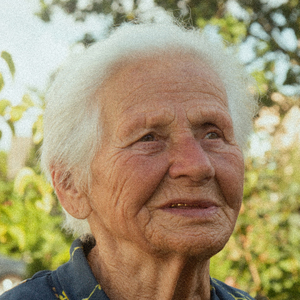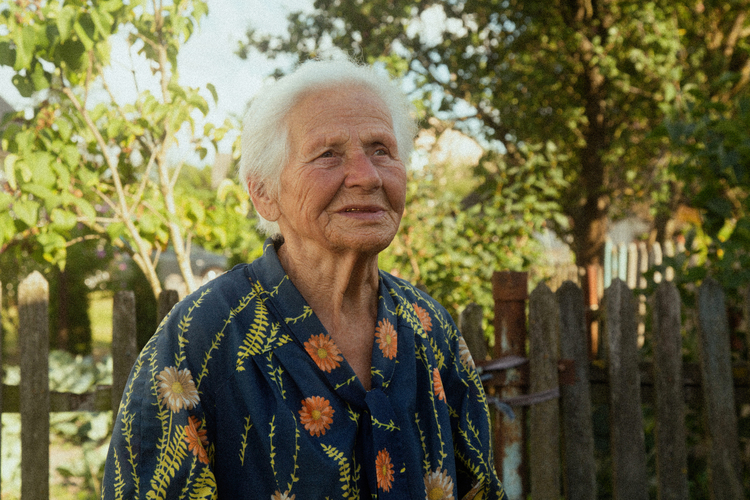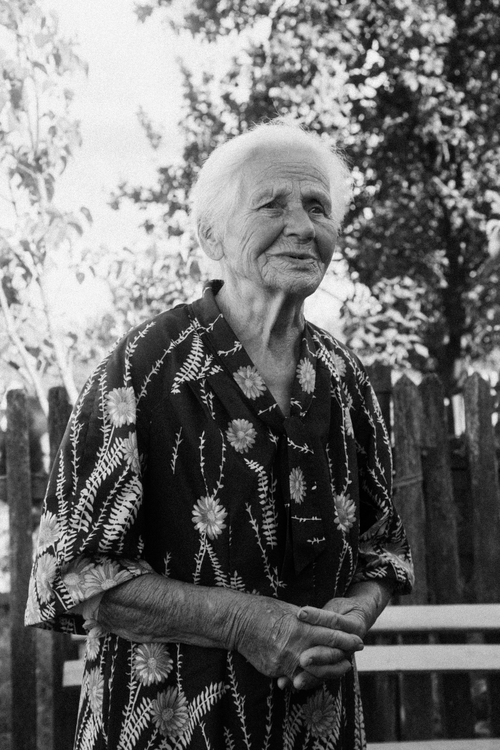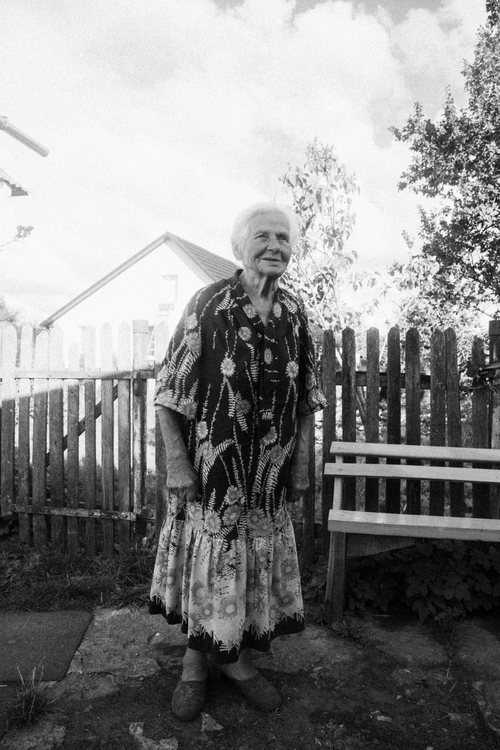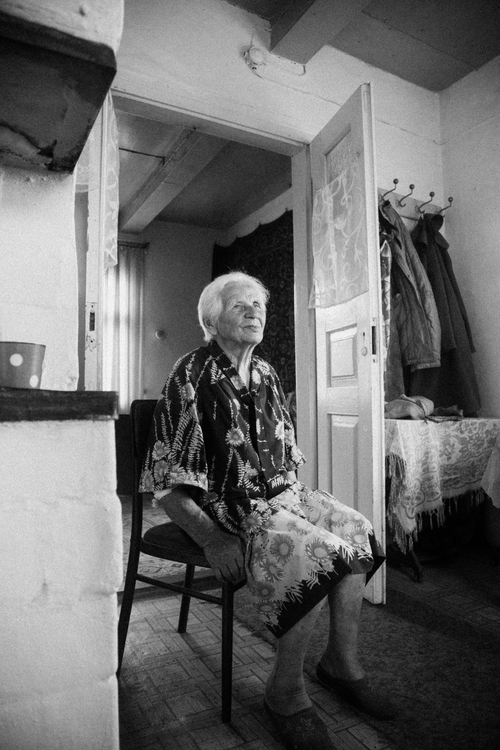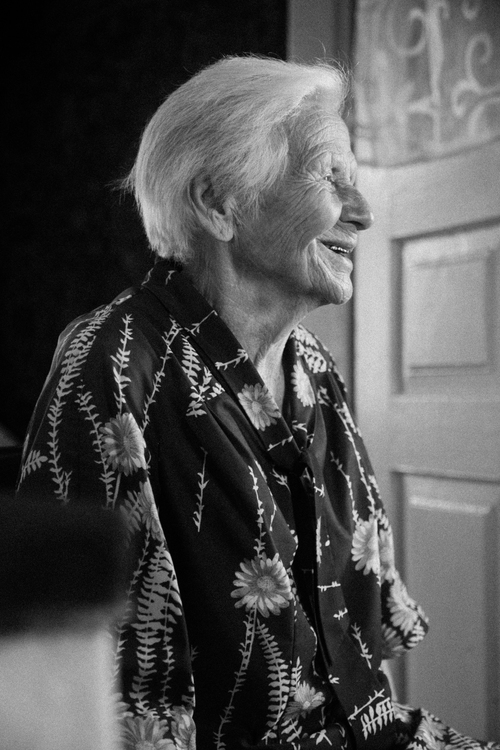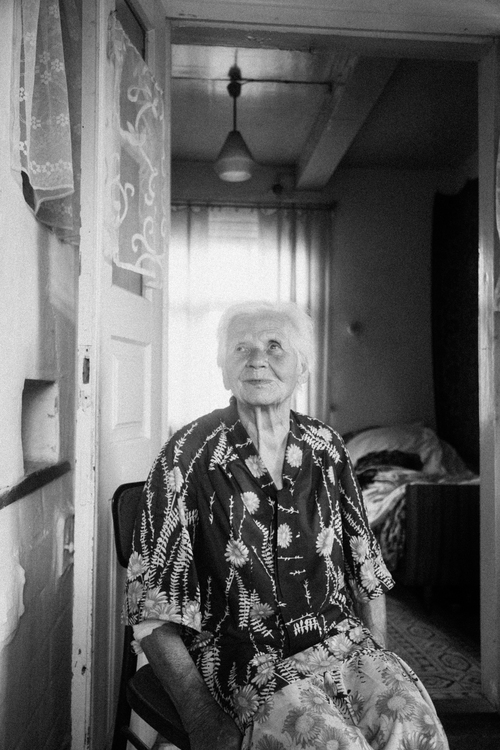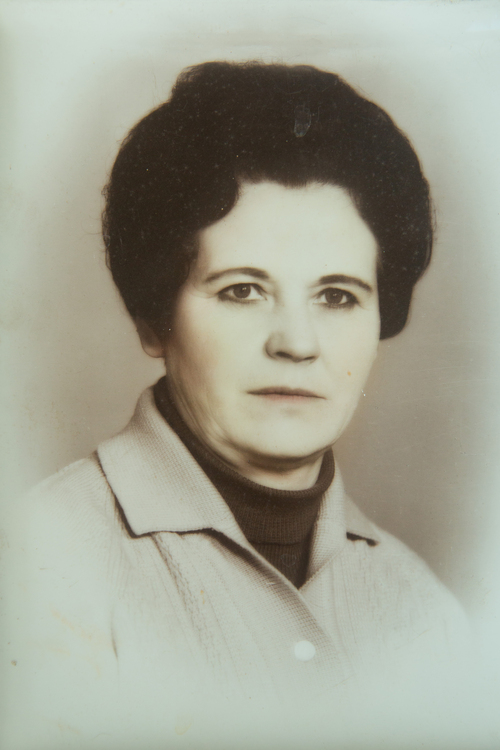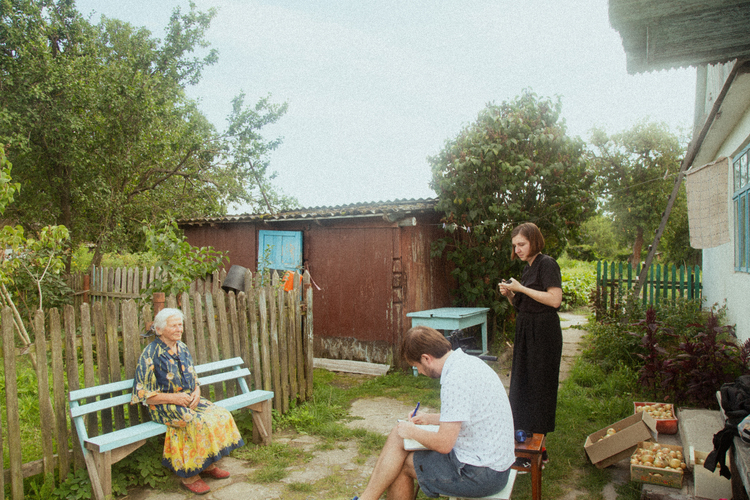Maria Fedorivna Yanko (née Androshuk) was born on January 26, 1926, in the village of Ugly Pershi in the Kovel District of the Volyn Voivodeship (now the village of Partyzanske, Kovel District, Volyn Oblast). Her parents, Fedir and Antonina Androshuk, worked in agriculture and owned ten hectares of land. Maria had two sisters, Olha and Ustinia, and three brothers, Volodymyr, Ananiy, and Ihor. Maria lived with her family and attended school in the nearby Polish colony of Nova Dibrova, up until seventh grade.
During the Nazi occupation, Maria’s father helped local Jews hide from Nazi persecution. Her eldest sister, Olha, was put on the list for deportation to forced labour in Germany. However, with help from local partisans, Olha escaped into the Zuman forest. It was for this reason that a local council member, a number of police officers, and a German came to the Androshuk family home on July 22, 1942; they took 16-year-old Maria in the place of her sister. Maria recalls her arrest: “They threw me on a cart. I was barefoot, herding geese, and they took me away from there. They did not even let me take anything with me or enter the house. Only my mother had time to give me at least something. In just one dress, as I was, that’s how they took me”.
She was first taken to the district centre in Holoby, and from there to a collection point in Kovel. A local man, with whom Maria’s older brother, Volodymyr, had served in the Polish army, commanded her. He allowed Maria’s brother to visit her and give her some food but categorically refused to let her go. Three weeks later, Maria was taken to Germany by freight train.
She arrived in the city of Oldenburg, Lower Saxony. There she was forced to work with cargo and to sew an “OST” patch on her clothing – she was also given wooden shoes, “Holzschuhe.” After this, she was deported to a farm run by the Bruns family, in the village of Hatterwüsting. The Bruns family consisted of the master and mistress, as well as their five children. They kept 19 cows, which Maria had to milk, take out to graze, and collect milk cans from. In the span of a few days, her hands became so swollen from this physical labour, that she could not fully milk the cows. When the owner noticed this, he beat her: “So he beat me with that bucket until my skin was blue.” She also performed domestic tasks around the house, including cleaning and washing dishes. She remembers that she slept only a few hours each night. In addition to their tasks on the farm, she and other forced labourers were sent to various construction jobs. Maria lived in a separate room in the owners’ house and was fed quite poorly with leftovers. However, she was allowed to correspond with relatives and had contact with two other forced labourers from the Dnipropetrovsk region that were stationed nearby, Zina and Nadia.
During bombing raids, Maria, like the other forced labourers, where forbidden from sheltering in a bomb shelter - they were forced to work. Once, shrapnel killed the cow she was tending to, but Maria survived: “I remember I wrote a letter to my family that day, telling them how the day was tough, and the cow was killed right in front of me, and I couldn’t do anything with it. I wasn’t hit.” Shortly before war’s end, Maria was transferred to a farm belonging to the Bakgus family, located in the village of Sandhatten. It was there that the US Army liberated her. The Army registered her and made her an offer to immigrate to the USA – which she declined; she was then given over to the Soviet authorities. The Soviets interrogated her: did she go to Germany voluntarily? Was there anyone in the family connected to the supporters of Stepan Bandera? In the end, she passed their inspection and was allowed to return to Ukraine. Before she set off home, she worked briefly as a freight worker - loading boxes with weapons into wagons.
In October 1945, she returned to her native village. Three of her brothers had served in the Red Army. One of them, Volodymyr, had fallen in combat, while two others suffered injuries resulting in loss of limbs.
Following the war, Maria worked in trades for 63 years. She currently lives in Holoby. She has kept in touch with the eldest son of the Bruns family, on whose farm she was interned – she has even gone to Germany to visit him with her daughter and husband.
Written by Alexandra (Hildesheim), Gyeong (Seoul)
